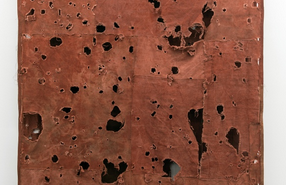Simon Callery, born London, 1960. Educated; Campion School, Athens, Berkshire College of Art and Design, graduated Cardiff College of Art, 1983. Recent paintings emphasis physicality and are made in direct contact with the hard surfaces of the urban environment or on location in the landscape. Landscape based work has been informed by long-term collaboration with School of Archaeology, University of Oxford. Canvasses are marked, cut and punctured, soaked in highly saturated distemper and stitched together to form interior voids and spaces. He has shown extensively in the UK and internationally since the 1990’s including; Young British Artists III. Saatchi Gallery, London. 1994. Sensation. Royal Academy of Arts, London, Hamburger Bahnhof, Berlin & Brooklyn Museum, New York, 1997. ArtNow 19. Tate Britain, 1999. Paper Assets. British Museum, 2001. Segsbury Project. Dover Castle, 2003. Recent solo shows include; Open Body. Annex14. Zurich. 2017. Pit & Void Sequence. Geukens & de Vil. Knokke. Belgium. 2017. Unosunove, Rome, 2019. He was an Abbey Fellow in Painting at the British School at Rome, 2018. Forthcoming solo shows in 2021 at Annex 14, Zurich and Rafael Perez Hernando, Madrid. Callery lives and works in London.
I brought 50 metres of canvas, 20 kilos of pigment and two 5-kilo bags of rabbit skin size with me to La Boissiere. I wanted to make paintings whose colour and form derive from physical contact with the landscape.
I threw the canvasses down on the sloping ground outside the studio and soaked them with distemper (powder pigment and rabbit skin glue). The colour was a direct reference to the colour of the surrounding farmland. I left them out to dry and later to be blown about and softened by the wind and the rain. I submerged others in the Argentor and left them in the river water overnight.
Over the following days and weeks the canvasses began to show signs of dilution marks, wear and scratches in the pigment – evidence of their exposure to the weather and contact with the landscape. Conscious of what these marks suggested, I cut into the fabric more producing a number of irregular shaped and sized canvas elements.
I would drag them into the studio to the sewing machine to be stitched together (to form the exterior or interior faces of the paintings) and then back out again. By now, I could see the inter-dependency of the outside (landscape and canvas) and the inside (studio and construction) as one of the defining characteristic of the place.
Finding a way to get finished paintings onto the concrete block studio wall was a challenge. Without my London studio tools and specialist materials I felt lost. I had no choice but to turn this practical problem into a creative challenge. For days I scavenged the local Carrefour supermarket and fields around Champagne-Mouton for scraps of wood. I glued and screwed my finds together to make long horizontal structures (pinned to the wall with a single screw) designed to support the canvasses. I had been forced to rethink my established practice and to develop a new solution. What I take away with me from the residency is the growing awareness that contemporary painting must be flexible to survive. It must adapt to being made on the move and it must accommodate being shown in new environments.
Simon Callery, Launch Pad LaB, Autumn 2018.
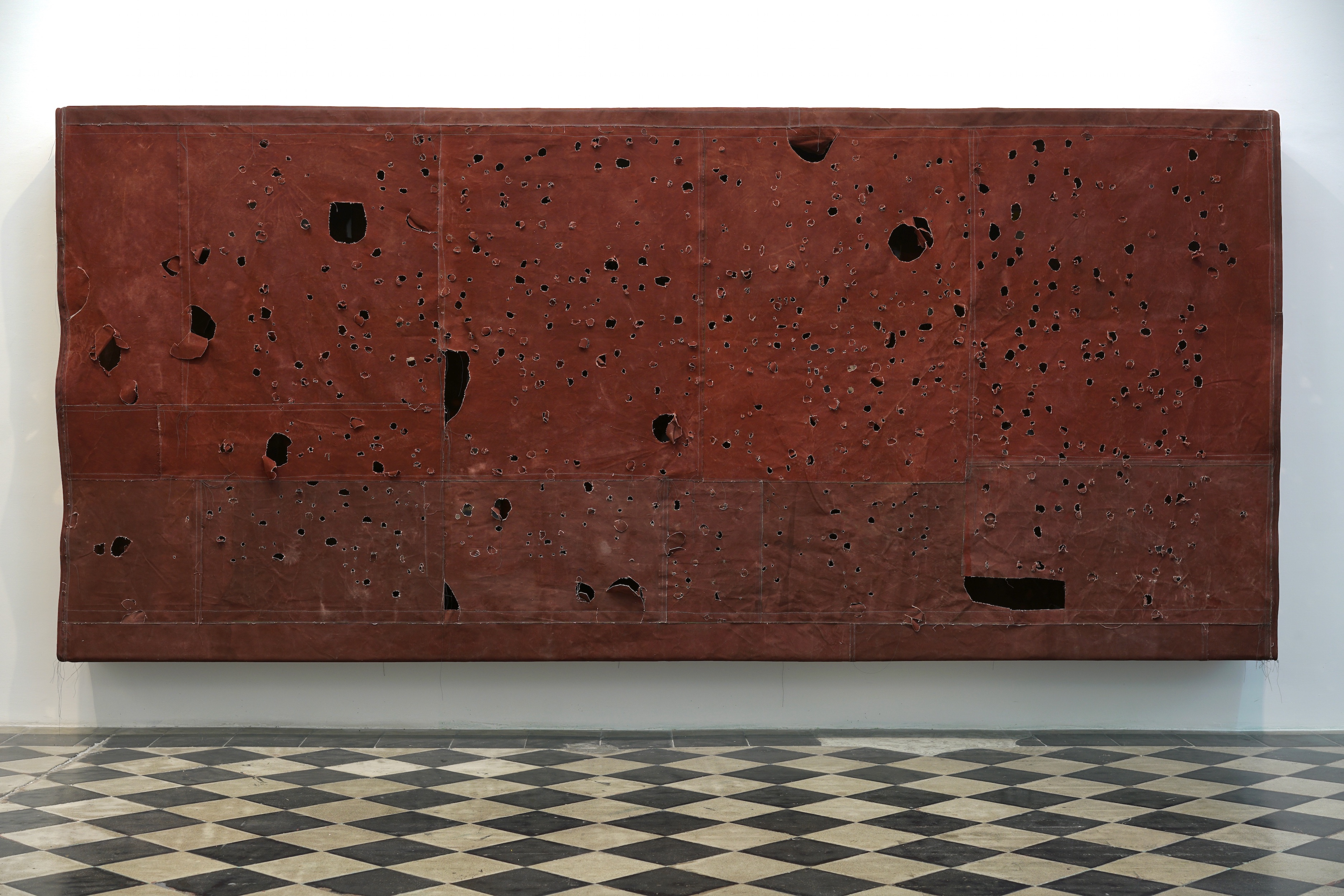
Contact Painting. Rome (Alessandrino), 2019. Canvas, distemper, pencil, thread and wood, 187 x 410 x 35 cm. Image: © Simon Callery. All Rights Reserved, DACS/Artimage 2021. Courtesy; Unosunove. Rome.
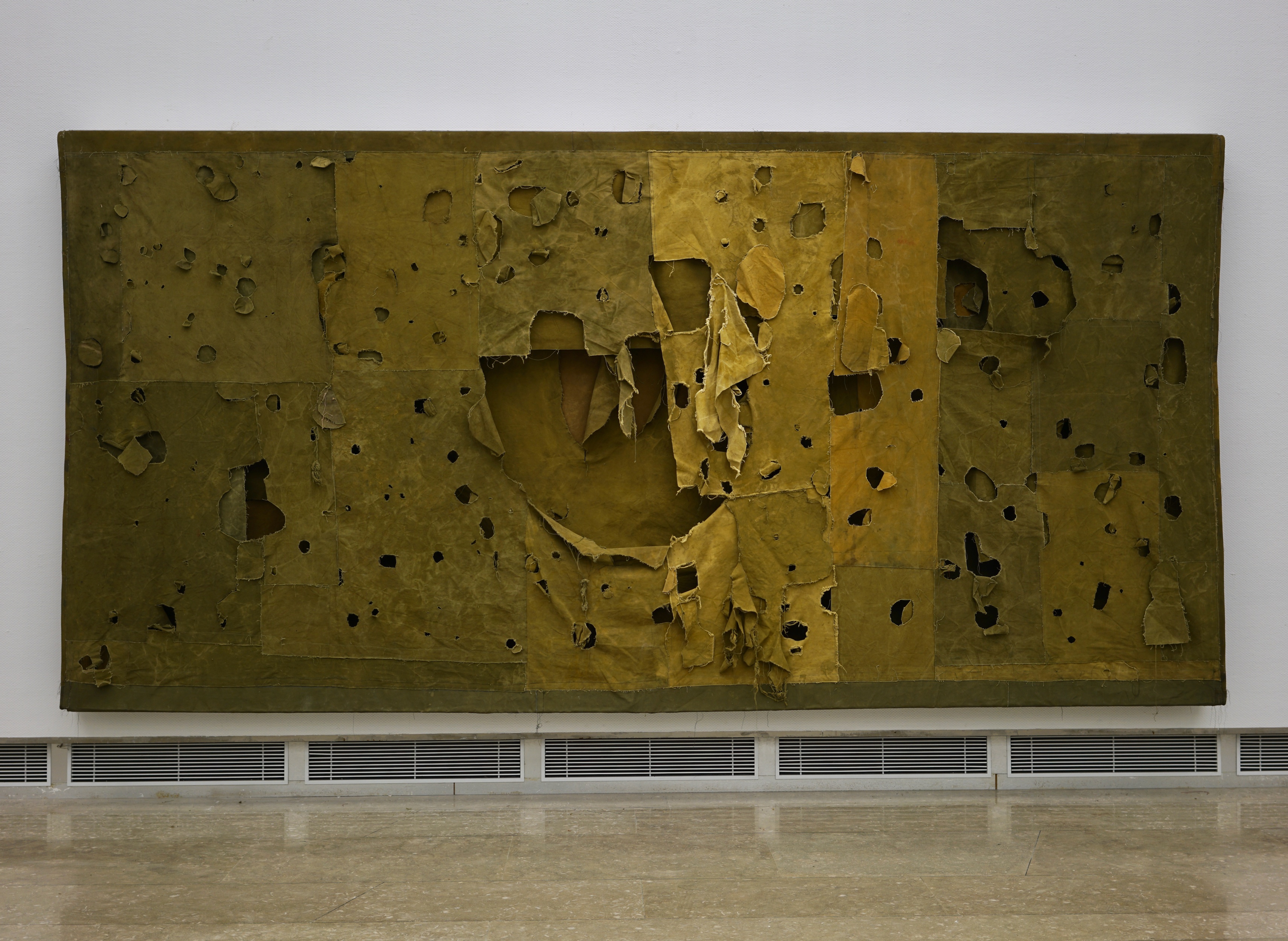
Country Register, 2018, Canvas, distemper, thread, wood, aluminium rail and steel bolts, 250 x 503 x 22 cm. Image: © Simon Callery. All Rights Reserved, DACS/Artimage 2021.
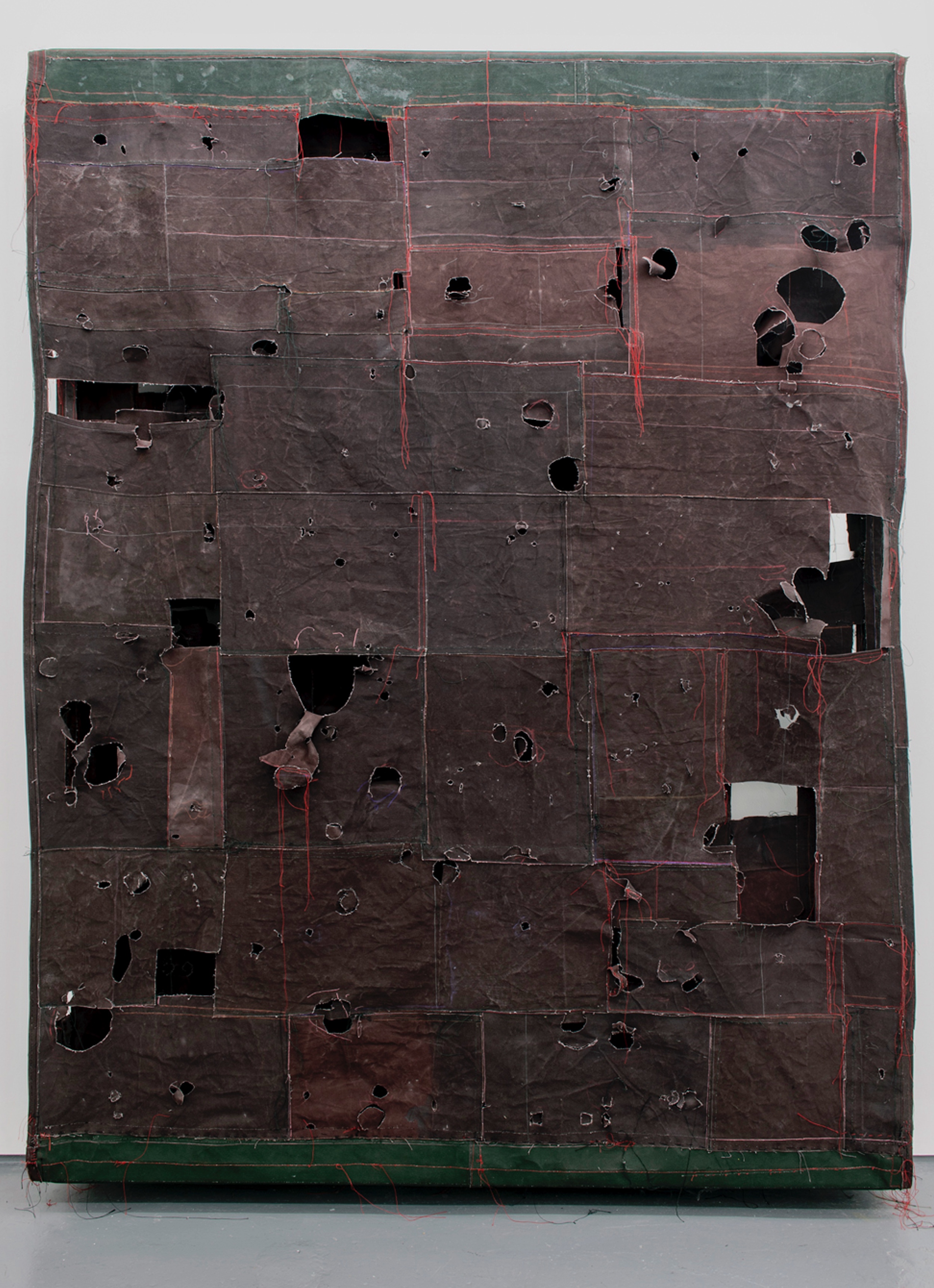
Flat Painting Bofari 15 Caput Mortuum, 2015. Canvas, distemper, thread, pencil, wood, and aluminium, 237 x 178 x 26 cm. Image: © Simon Callery. All Rights Reserved, DACS/Artimage 2021, Courtesy; Fold Gallery, London. Private collection Madrid.
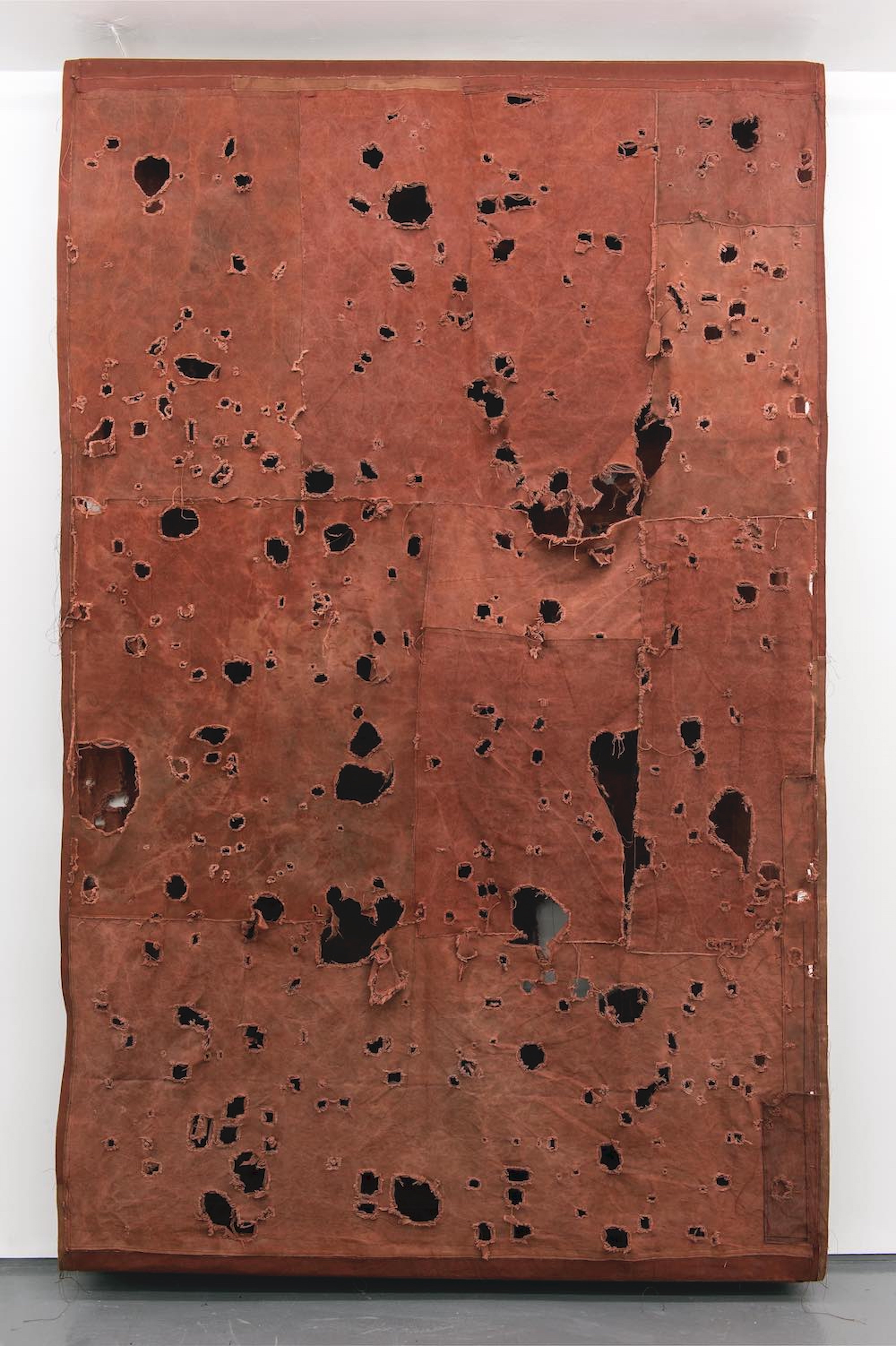
Flat Painting Bodfari 14/15 Ferrous, 2014 – 2015, Canvas, distemper, thread, wood, and aluminium, 293 x 182 x 19 cm. Image: © Simon Callery. All Rights Reserved, DACS/Artimage 2021, Courtesy; Fold Gallery, London.
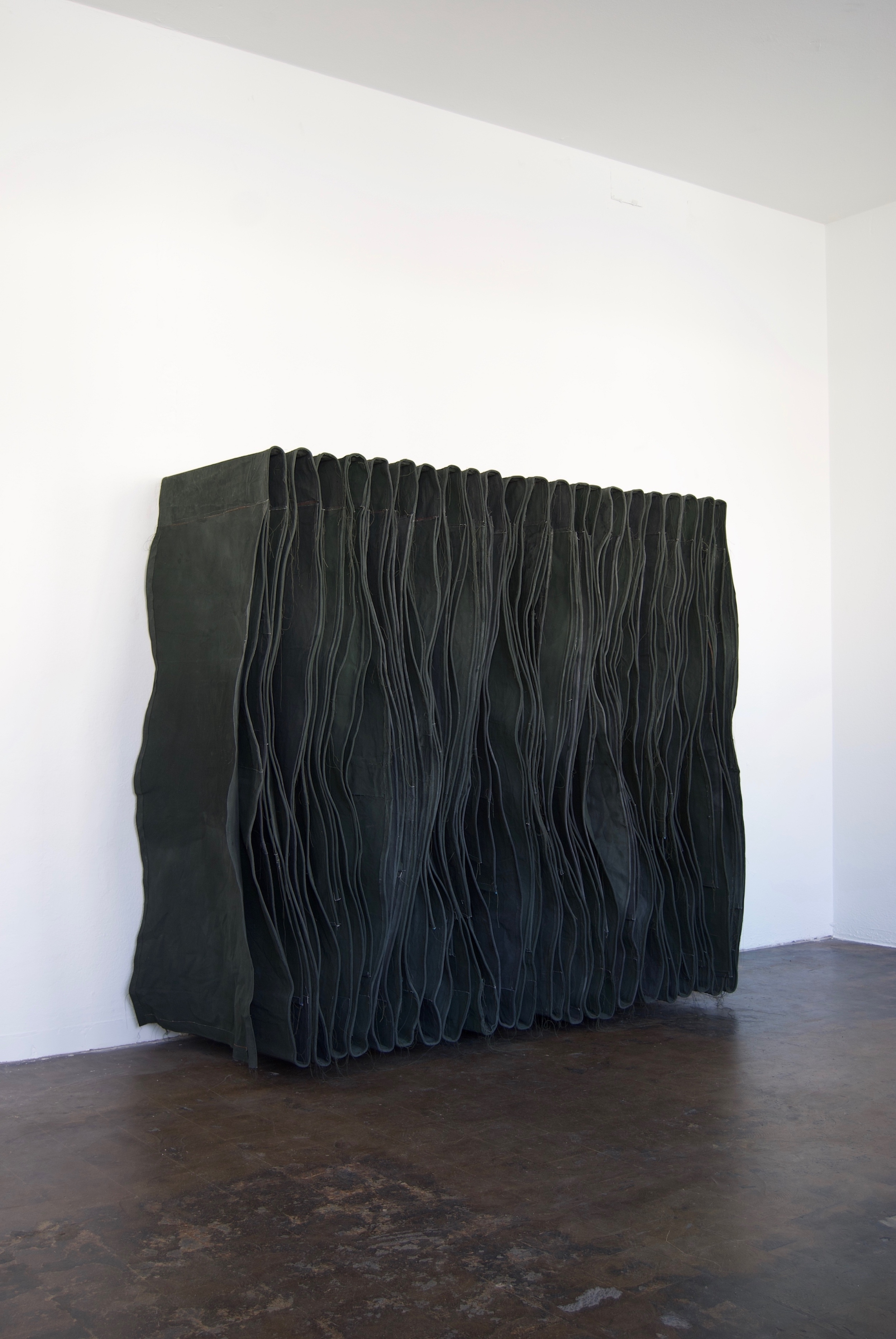
Wallspine (Leaf), 2015, Canvas, distemper, thread, aluminium and steel brackets, 206 x 236 x 84 cm. Image: © Simon Callery. All Rights Reserved, DACS/Artimage, 2021.Courtesy; Annex14, Zurich.
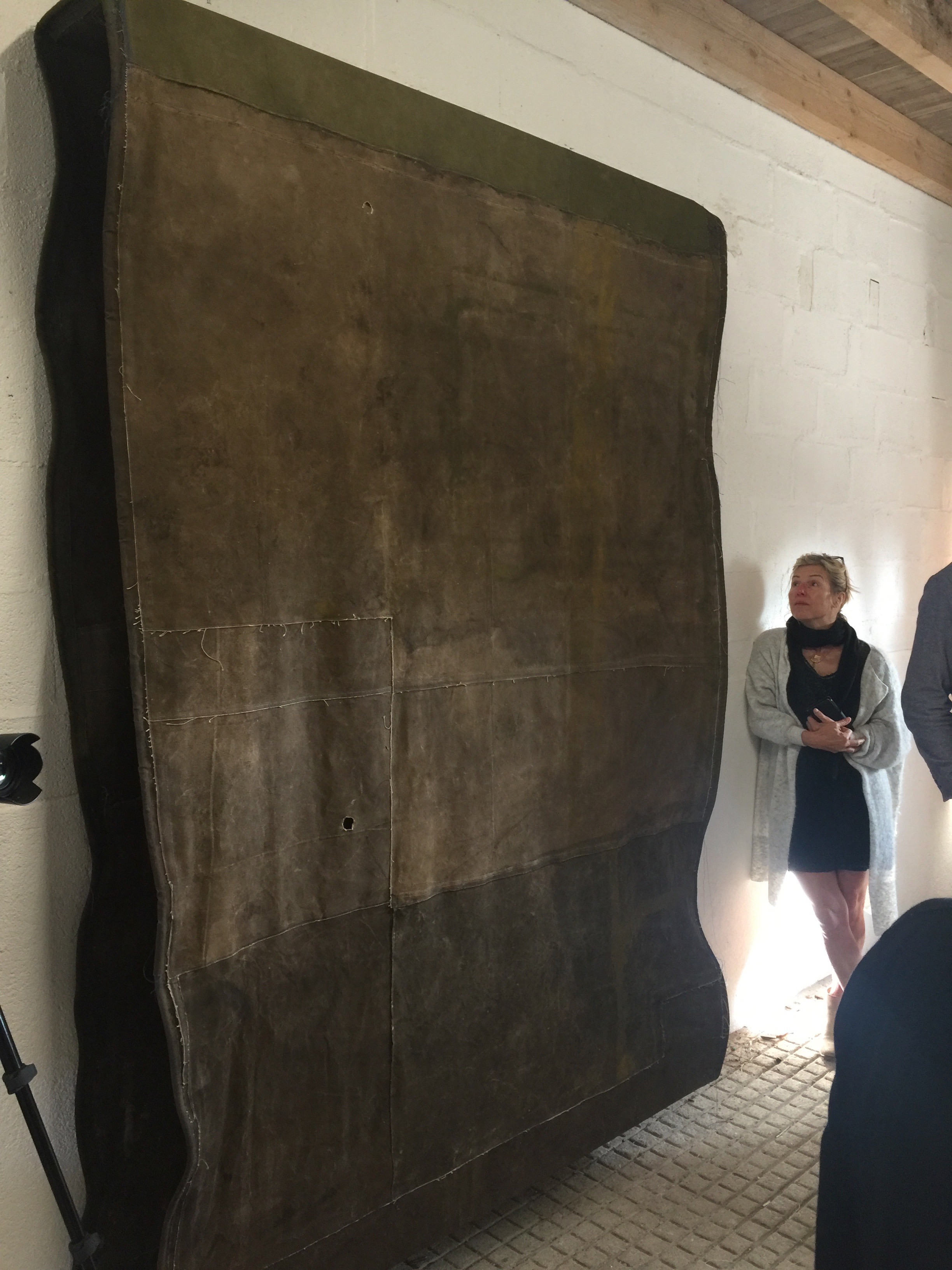
Studio visit, Residency, Launch Pad LaB, La Charente, France. Autumn 2018. Image: Courtesy Launch Pad LaB.
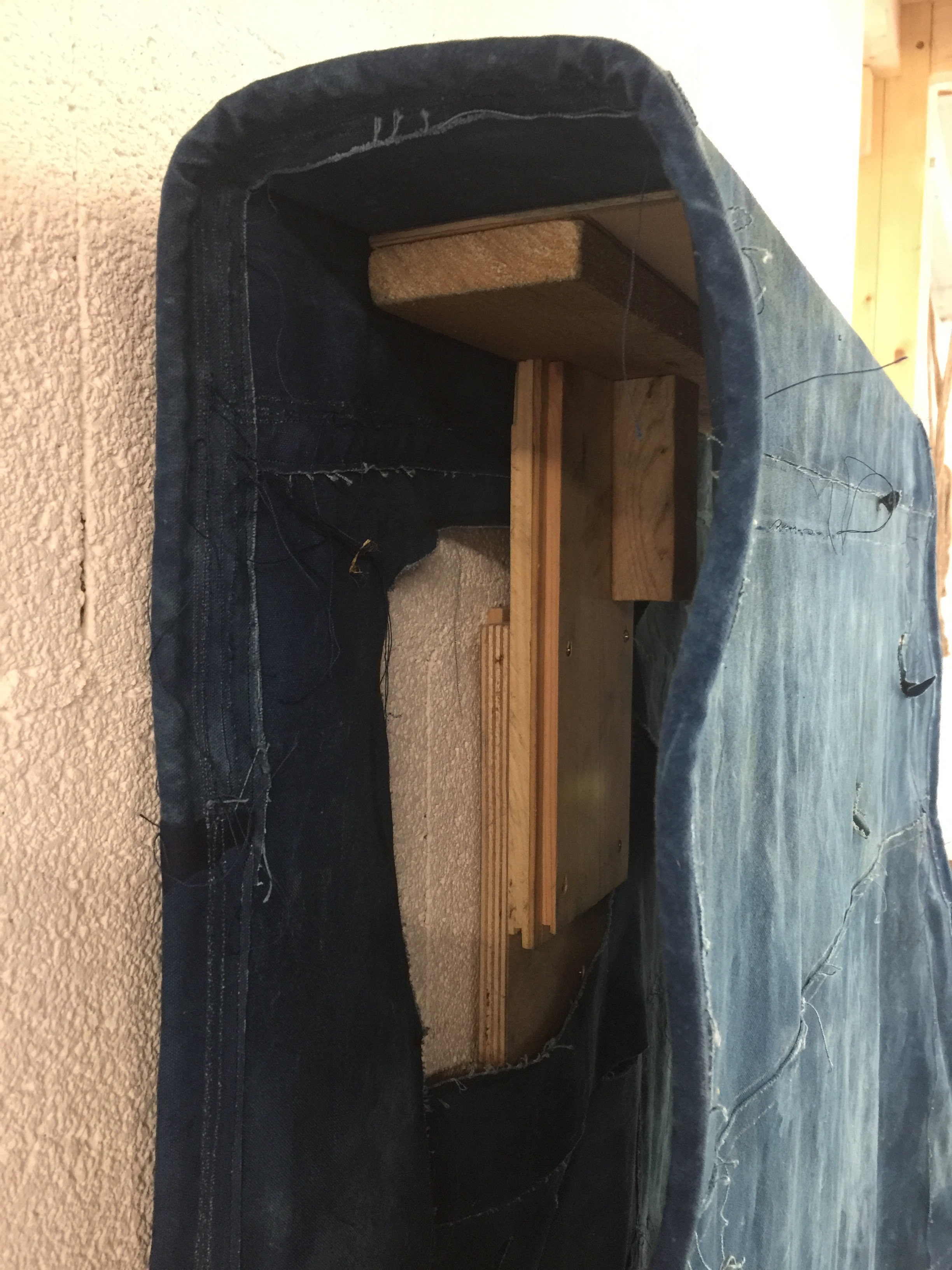
Detail
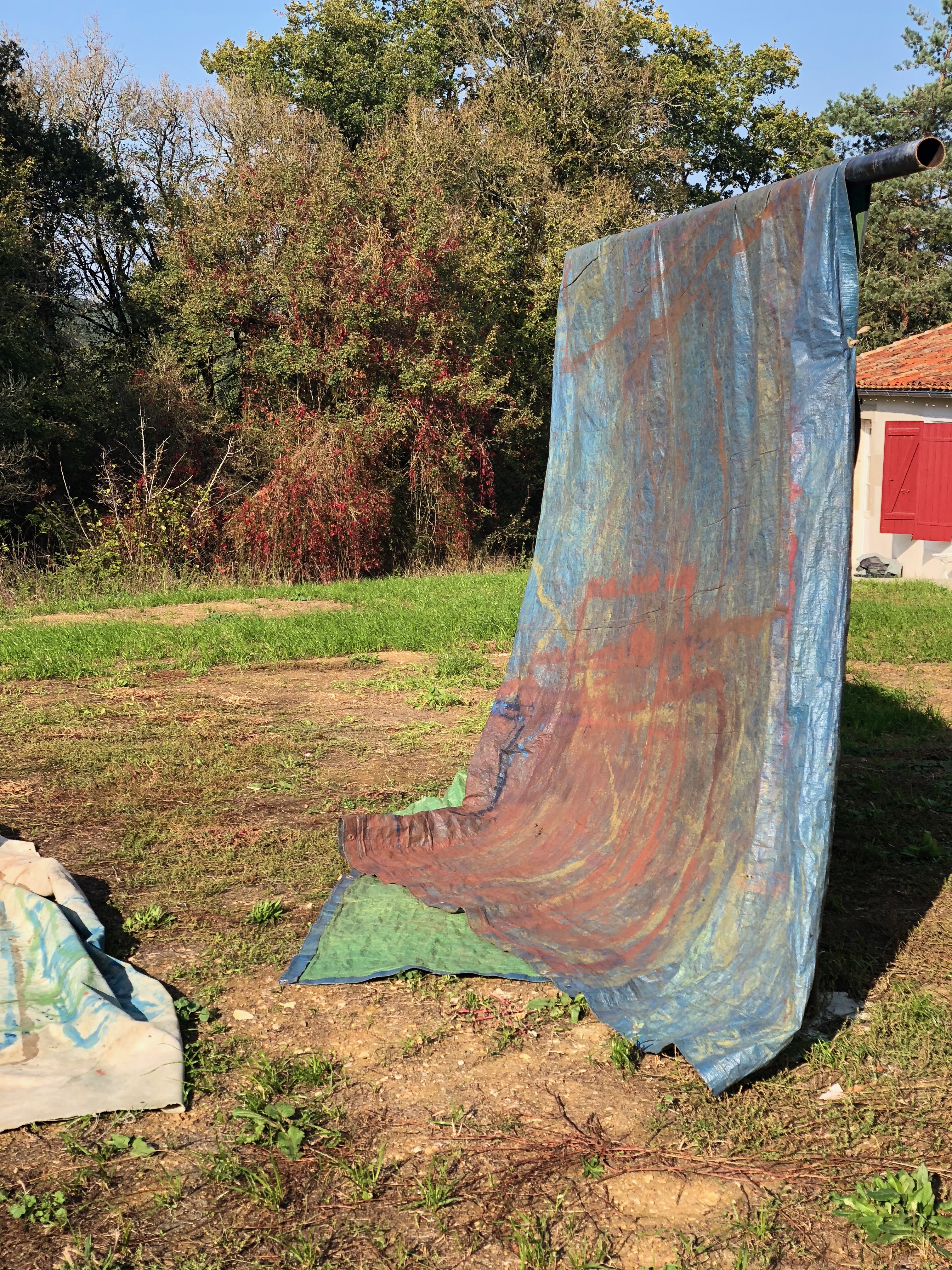
Studio practice, Residency, Launch Pad LaB, La Charente, France. Autumn 2018. Image: Courtesy: Launch Pad LaB.
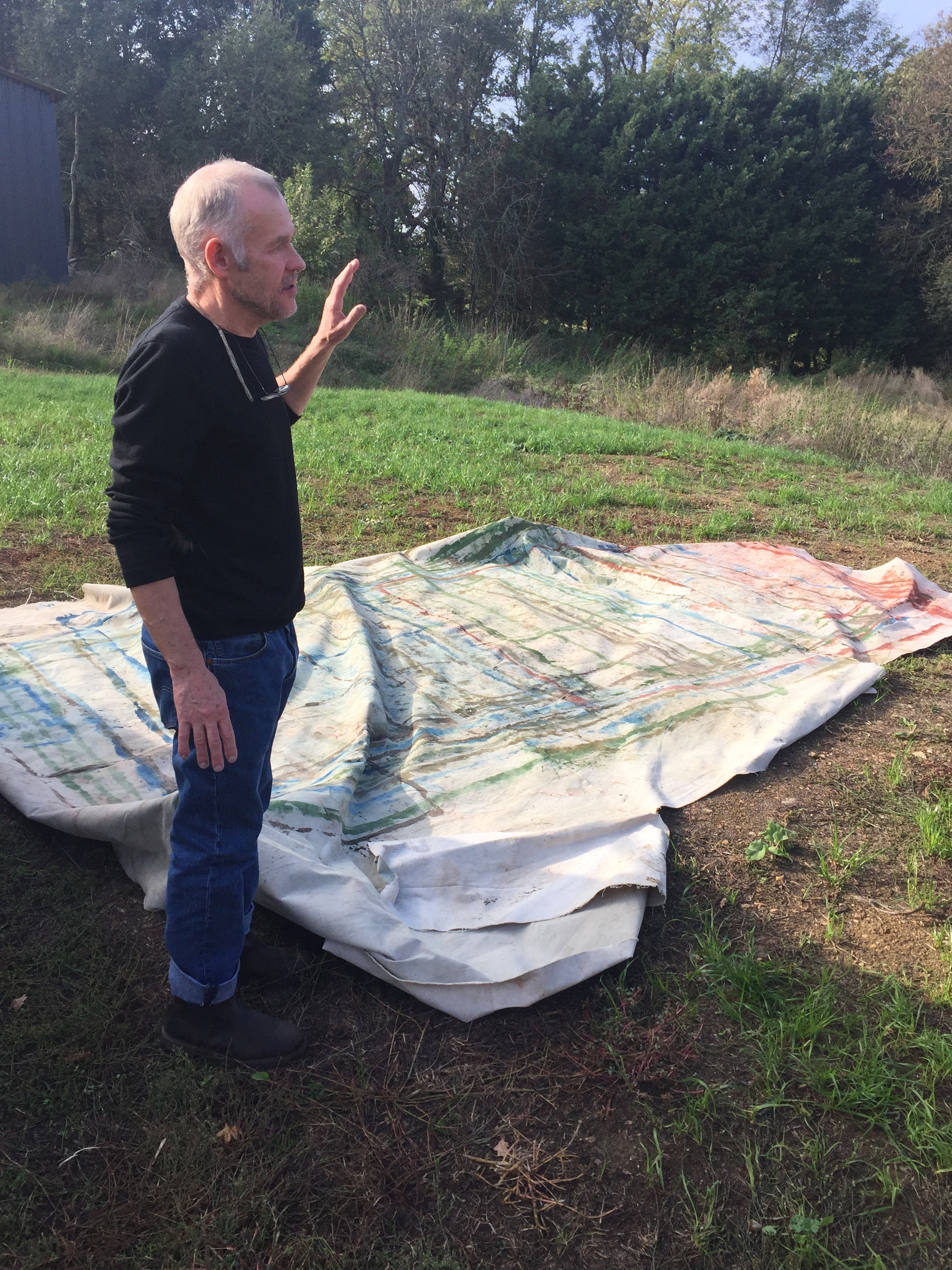
Studio visit, Residency, Launch Pad LaB, La Charente, France. Autumn 2018. Image: Courtesy: Launch Pad LaB.
